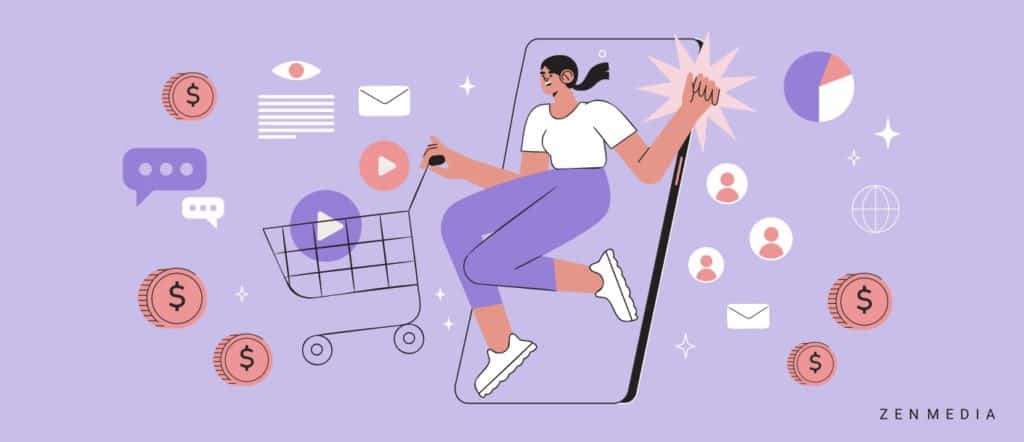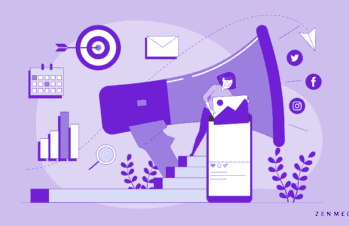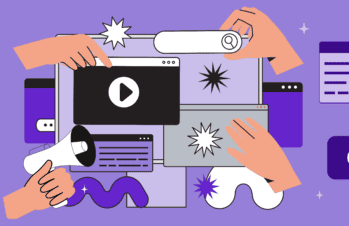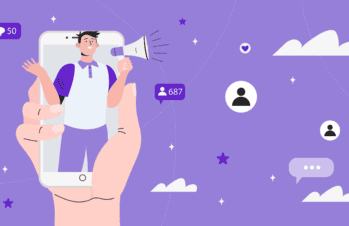Media is the new era of marketing. Advanced digital technology, changing consumer expectations, and new trends make media the ideal way to get your audience’s attention.
In other words, marketing in 2023 is less about direct persuasion and more about the right mix of education, entertainment, information, and, of course, amplification.
This requires a carefully crafted message and a smart tactical follow-through. And that smart tactical follow-through almost always requires some form of paid advertising.
Before we delve into our paid advertising recommendations for 2024, let’s refresh our answers to two critical questions:
- What is paid media?
- How does it work in tandem with earned, owned, and shared media?
Paid Media and Balanced Brand Resonance
Balanced brand resonance is an omni-channel marketing technique that encompasses Shared, Earned, Owned, and Paid media. By looking at these four media forms together, we can determine how they intertwine and how brands can implement them together to move the needle for their marketing efforts.
Shared Media
Shared media involves brand promotion and engagement through social media channels. Instagram Stories and Facebook Live are examples of shared media.
Earned Media
Earned media can take the form of a mention in a newspaper, journal, magazine, or any other outlet equivalent to a media hit. Earned media is what we associate with traditional PR and digital PR.
Owned Media
Owned media is content a brand owns and has full control over, like a company website or blog.
Paid Media
Paid media includes social media advertising, sponsored content, and email marketing that you pay for—think Facebook ads and LinkedIn video ads as examples.
When used together, these four types of media can extend the reach of your marketing campaigns and engagement, ultimately leading to recognized expertise and leadership.
Why Even Use Paid Media?
One of the most important reasons a B2B paid media strategy should be a part of your overall marketing campaign is that organic reach alone is unreliable. That’s right, due to the sheer volume of content on the internet and changes to social platform algorithms, the chance that you’ll get a large number of eyes on your content without paying to promote it is pretty minimal.
In addition, paid advertising is predictable and dependable—after all, you paid for it, so you control it!
Top Paid Media Trends for 2024
Here are a few top paid advertising trends we’re seeing this year.
More AI-Based Automation
Artificial intelligence is already being integrated into marketing. We’ll be seeing more of it this year, especially in the form of intelligent content.
AI will also continue to curb advertising fraud.
But perhaps the most relevant application of AI for brands’ paid media strategies in 2024 is its ability to provide you with up-to-the-minute customer data so you can always stay updated on the latest trends and target your paid ads with greater precision.
With the ability to monitor activity across numerous digital channels, AI tools can supply you with the most accurate customer profiles available. These customer profiles can also help you figure out how to interact with your customers in the most constructive and accommodating way. Rather than interrupting them the way traditional advertising does (TV commercials when your program is just getting good or pop-up ads when you’re trying to browse the internet), you’ll be able to interact with them in a way they find helpful and constructive.
For example, Facebook recently rolled out a tool called Budget Optimizer. Previously, Facebook optimized ad creative within ad sets (audiences). This meant that the top-performing creative naturally would get the lion’s share of impressions.
Now, with Budget Optimizer in play, Facebook can optimize budgets between ad sets, assigning budgets to audiences based on real-time performance. There are many test-and-learn opportunities for advertisers with these new automated optimization levers.
Continued Use of Chatbots
Consumers will also continue to communicate with businesses through messaging apps—which means now is the time to review how chatbots can help you streamline.
That’s not to say AI will or should take over all customer service proceedings. Many situations still require the human touch. 2024 is about finding that balance between scaling efficient communications while honoring the importance of personalized support.
When you do implement your brand’s chatbot in the paid media campaign, don’t forget to create paid Facebook ads that direct users to your designated concierge chatbot.
Influencer Marketing
The best possible outcome for paid advertising is high organic reach paired with high engagement.
After all, paid media should always be seen as a way to amplify content that’s already resonant and value-adding, not as a means of forcing more eyeballs onto your brand.
More and more brands are looking to influencers for that engagement element. With followers who trust them and fluency in social trends, influencers are paid media’s secret weapon.
When combining paid media with influencer partnerships, make sure you outline the KPIs in advance and establish an agreement so you can gain access to your influencers’ data on how the campaign performed on their channels.
Even More Video Content
Last year, online videos had an audience reach of 92.3% among internet users worldwide. On top of that, this year, the average internet user will consume over 100 minutes of online video content per day, so it’s not surprising to learn that 90% of marketers report video has helped them increase brand awareness and has a positive ROI.
That means your brand can’t afford to sleep on video content.
YouTube is the most widely used video marketing platform, with 90% of marketers turning to the video giant to share content, followed by Facebook (86%), Instagram (79%), and LinkedIn (76%).
YouTube’s Creator Insider channel is one extremely useful tool for brands planning their creative assets for 2024. The tech team at YouTube uploads new videos every week, offering viewers a behind-the-scenes look at the platform. The Insider showcases interviewers with YouTube product managers and creators.
YouTube Premieres, similar to Facebook Live, is another useful tool. It allows video creators to further connect with their audience. When YouTube creators upload a video, they can publish it immediately, or select the Premier option, authorizing the creator to select the time the video will be streamed.
Come streaming time, the creator can watch the video at the same time as the audience and directly engage with them on the chat feature.
Think of how to make your visual storytelling stand out this year. What are some ways you can bolster audience interaction and participation?
Remember the golden rule: Most of paid media’s success stems from the other components of a fully balanced and resonant brand.
Don’t Forget the Basics!
While it’s important to be aware of what’s trending this year, trends will never be as important as honoring the basics. Let’s think about this in terms of a single social media post.
Every post should have a purpose. Whether it’s to increase sales, drive awareness about an initiative, or obtain an email address—knowing the post’s purpose will help build your brand.
Marketers should also target every post at a specific persona. Always ensure you’re asking yourself whom you’re targeting with this particular piece of content and what is your amplification strategy to support that.
By keeping an eye on the trends while remembering the basics and using this blog as your paid media guide, you are bound to have a successful year with your paid advertising initiatives.Ready to talk about amplifying your content with paid media? Contact us today!




